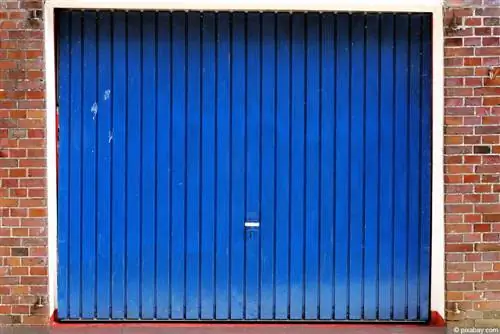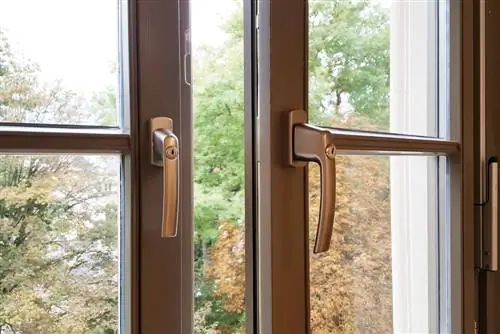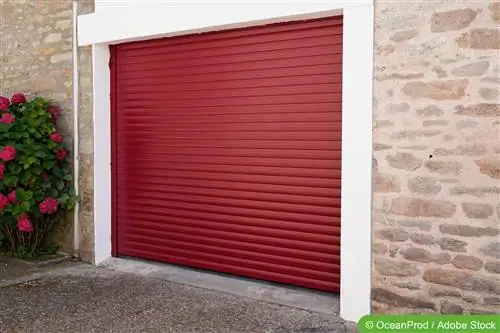- Author admin [email protected].
- Public 2023-12-17 03:39.
- Last modified 2025-01-24 12:45.
Setting and adjusting the garage door is necessary immediately after installation to enable smooth opening and closing. Otherwise, the door could be difficult to move, produce squeaking noises or not seal properly with the ground. Depending on the type of gate, this measure can be comparatively simple or complicated. However, some basic principles apply to all garage doors.
Security
The size and weight of the garage door as well as the tension on the springs pose a potential risk of injury. In addition, the work must be carried out from a ladder. Anyone who wants or needs to adjust a gate should therefore proceed with extreme caution. It is advisable to carry out the measure with two people to minimize the risk of injury.
Manufacturer’s information
For targeted adjustment and alignment of the garage door, the manufacturer's instructions should always be taken into account. Adjusting screws and other adjustment options are clearly shown here. If the instructions are missing because the door is not a new model but was taken over together with the garage, you can ask the manufacturer directly. This can also provide the relevant instructions for older models.
Necessity
As mentioned, adjusting the garage door can be useful or necessary for various reasons. The need is obvious if the gate does not line up completely and squarely with the ground. Other possible causes include:
- Sluggishness when opening
- Clamping or jamming
- Squeaking when moving
- visible spaces or gaps
- sufficient lighting
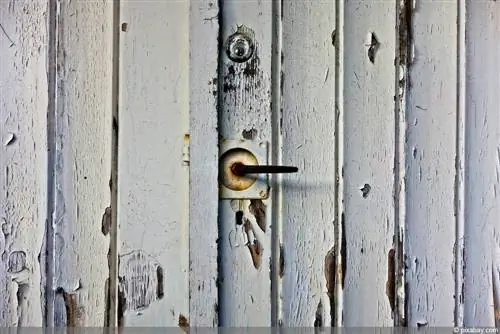
Immediately after installation, fine adjustment is necessary in almost every case so that the garage door can be adjusted accordingly.
Utensils
The following tools are required to adjust the garage door:
- Screwing tools
- Tape measure or ruler
- ladder
- Helpers
- Spirit level
It should also be noted that the changes should be carried out in parallel and gradually if possible. The garage door should be open and not moved during adjustment. Otherwise there is a risk of injury as well as damage to the gate.
Control
Before making any adjustments, the gate or its position should first be checked. To do this, proceed as follows:
- The alignment of the door leaf is checked using a spirit level. If the door leaf is crooked, the degree of deviation should be noted. Ideally, this is only a few millimeters, so only a few changes are required. The inspection is carried out with the gate half and fully open.
- The closing behavior is checked. To do this, the garage door is first opened halfway and then completely. If the opening is too wide, the tension is too high and must be reduced. However, if the gate tends to close again, the tension is too low and needs to be increased.
- The last step in the inspection is to check the suspension and the tension cable or the spring tension. Deviations, damage or problems are often noticeable even to untrained eyes. A comparison with the manufacturer's information provides information.
To avoid unnecessary effort, the gate should be observed from all sides when opening and closing. Squeaking and stiffness do not always have to be caused by incorrect or missing settings. It is also possible that, for example, rust has formed or a foreign body is stuck.
Preparation
To prepare, it is only important to inspect the suspension and prepare the appropriate tools. Furthermore, sufficient lighting and a stable position of the ladder should be ensured. It is particularly important that the moving components or adjusting screws are identified precisely. Again, the information provided by the manufacturer is crucial.
Spring tension
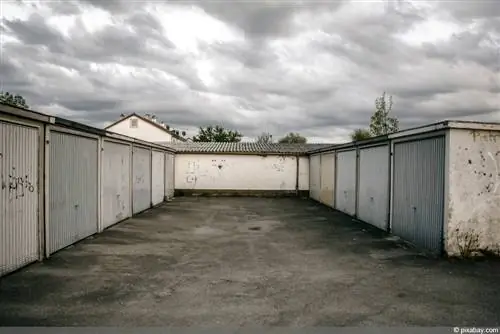
On garage doors with spring tension systems, adjusting the tension is comparatively easy. There are adjusting screws on both sides for adjustment. To adjust, proceed as follows:
- Depending on whether the tension needs to be increased or decreased, the adjusting screws are gradually screwed out or screwed in. Unscrewing reduces tension. Tightening the screws increases the tension.
- After each revolution, the setting is checked by proceeding as in the pre-check.
- If the tension but not the position has been adjusted, the adjusting screws must be changed by the same number of turns on both sides. If the position is changed because the door leaf was not previously set horizontally, several adjustment steps are necessary. This should be done in small steps and only half turns of the screw at a time.
Attention:
The adjusting screws should each remain in the nut for at least three full turns. Otherwise the required hold is no longer provided.
tension rope
For some types of gates, the adjustment and tension is carried out using a tension cable. The adjustment here is similar to that of the spring systems. First the rope is checked. If it is twisted and the rotation cannot be resolved, it must first be removed and reinstalled. If the tension is too low, the tension is increased again using adjusting screws or the corresponding moving components. However, if the tension is too high, it must be loosened. This should also be done step by step. A new check is carried out after each change. It should also be noted that the tension cable must generally be kept in a certain pre-tensioned state. If the tension is reduced too much, the function of the gate may be impaired.

